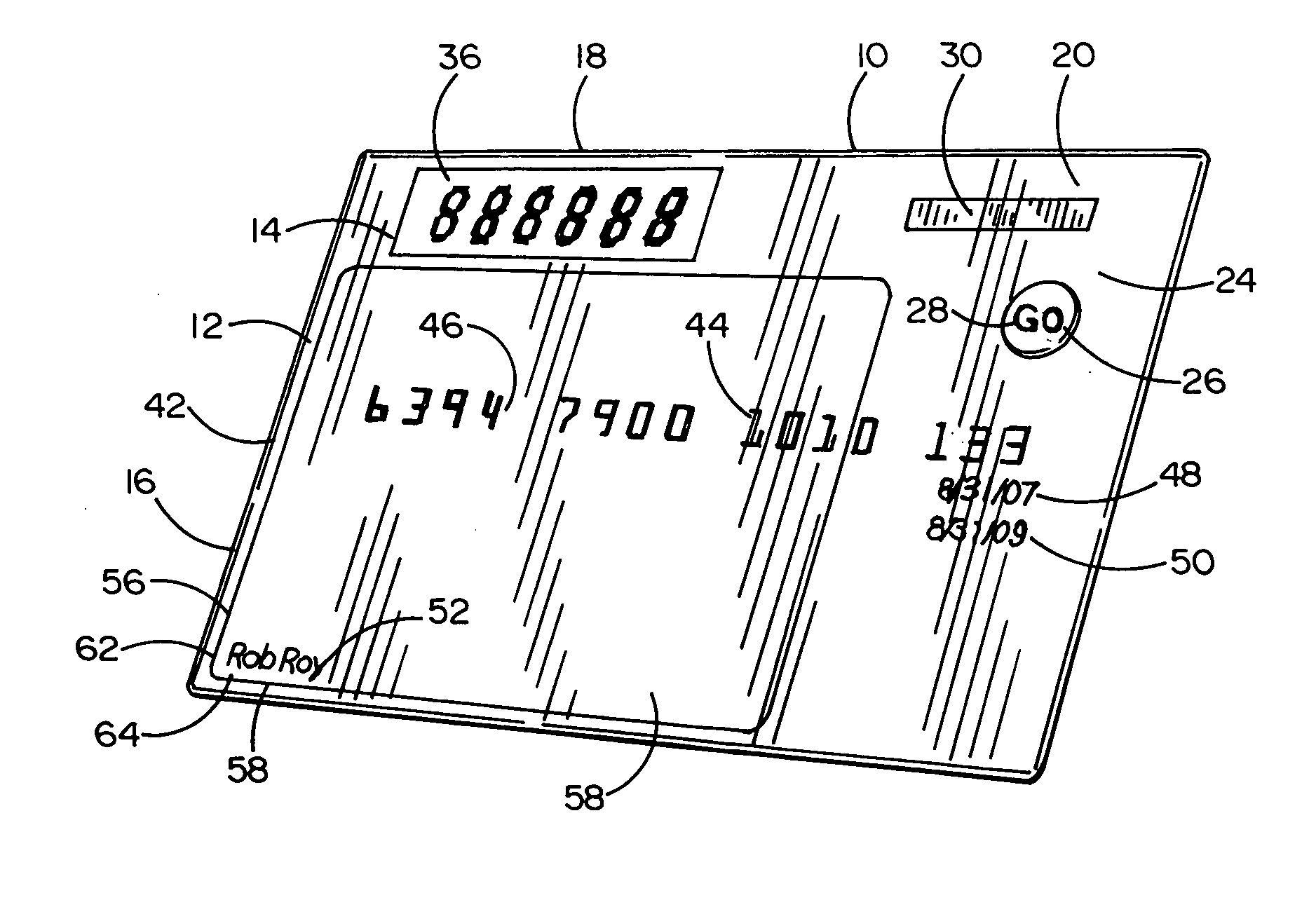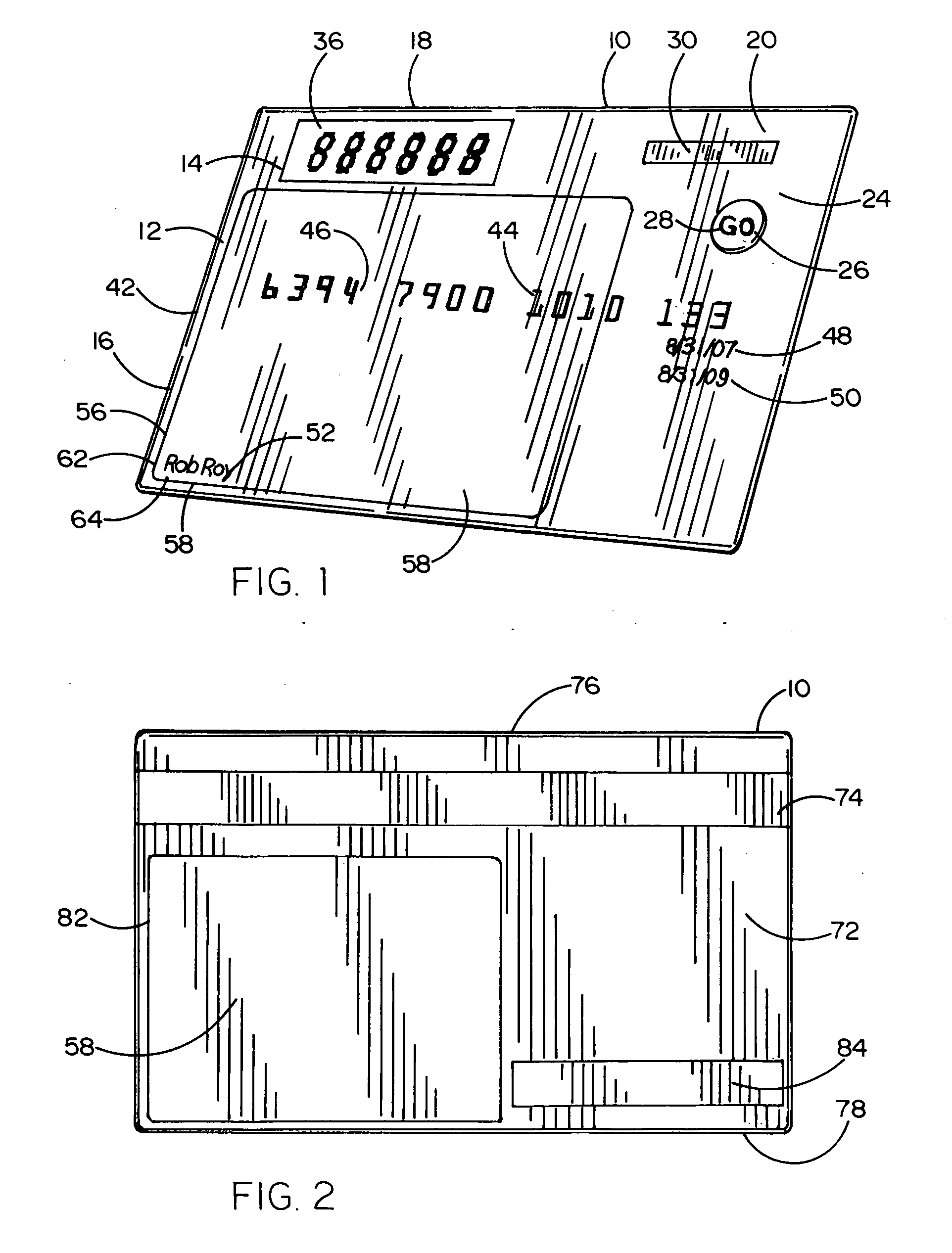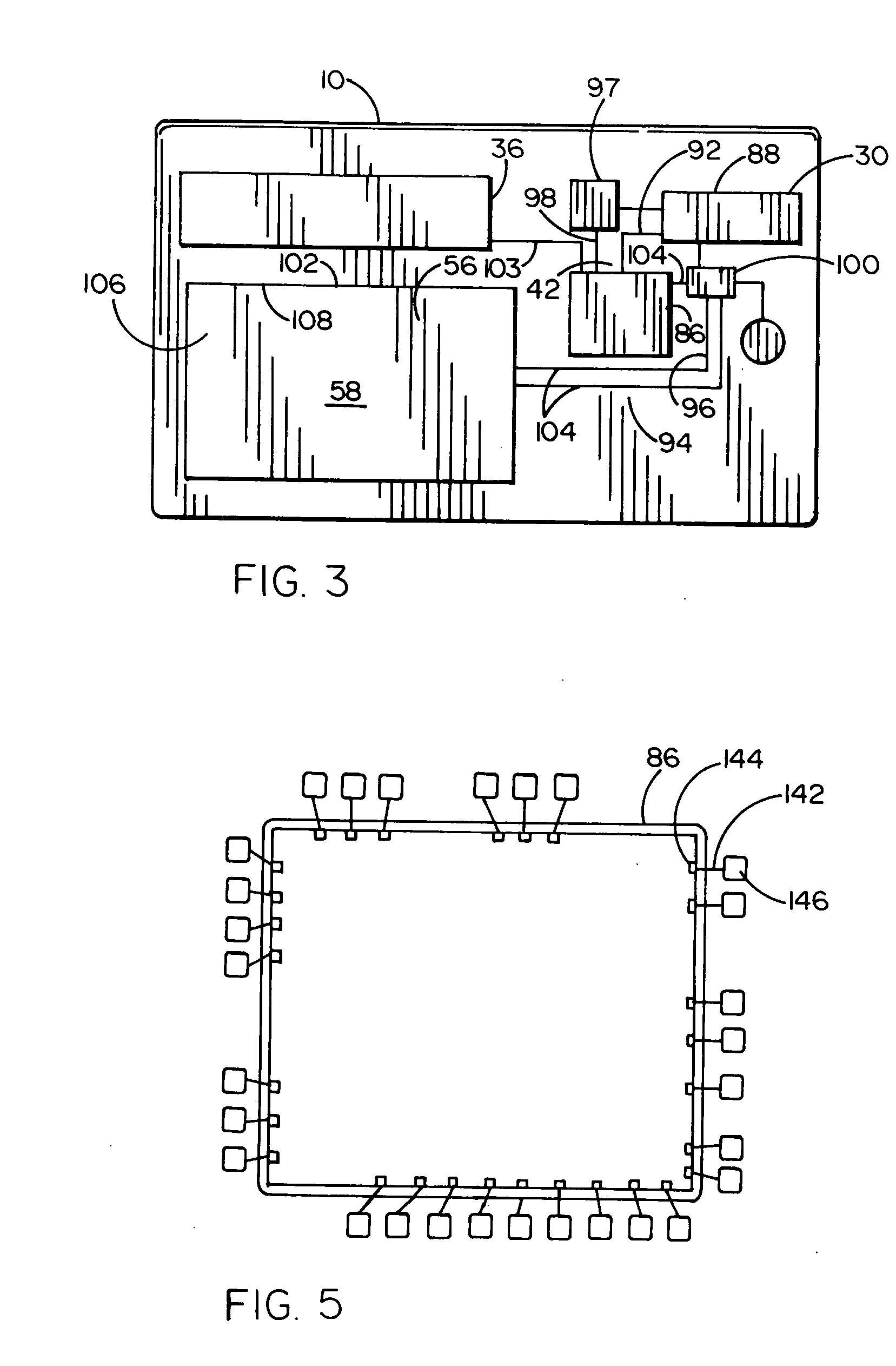Biometric authentication card and method of fabrication thereof
a biometric authentication and card technology, applied in the field of biometric authentication cards, can solve problems such as alarm features, and achieve the effect of avoiding excessive force and low profil
- Summary
- Abstract
- Description
- Claims
- Application Information
AI Technical Summary
Benefits of technology
Problems solved by technology
Method used
Image
Examples
Embodiment Construction
[0028]Referring to FIG. 1, a biometric card, the product of the process for fabricating a biometric authentication card, is designated generally by the reference numeral 10. The biometric card 10 is shown in prospective view with a front surface 12 having an upper portion 14, a lower portion 16, a left part 18 and a right part 20. The rough division of the card surface into quadrants is for purposes of convenience and is not to limit the invention but to aid in the description of the card layout, particularly as it relates to the best use of the limited card real estate and to the ergonomic aspects of operating the card.
[0029]The upper portion 14 of the card when oriented in the classic landscape mode, includes the input and output controls 24. The basic I / O controls include an activation button 26, which brings the card alive by powering up and initiating a startup routine. Because the card is a relatively low cost item, the default layout is designed to principally accommodate a r...
PUM
 Login to View More
Login to View More Abstract
Description
Claims
Application Information
 Login to View More
Login to View More - R&D
- Intellectual Property
- Life Sciences
- Materials
- Tech Scout
- Unparalleled Data Quality
- Higher Quality Content
- 60% Fewer Hallucinations
Browse by: Latest US Patents, China's latest patents, Technical Efficacy Thesaurus, Application Domain, Technology Topic, Popular Technical Reports.
© 2025 PatSnap. All rights reserved.Legal|Privacy policy|Modern Slavery Act Transparency Statement|Sitemap|About US| Contact US: help@patsnap.com



